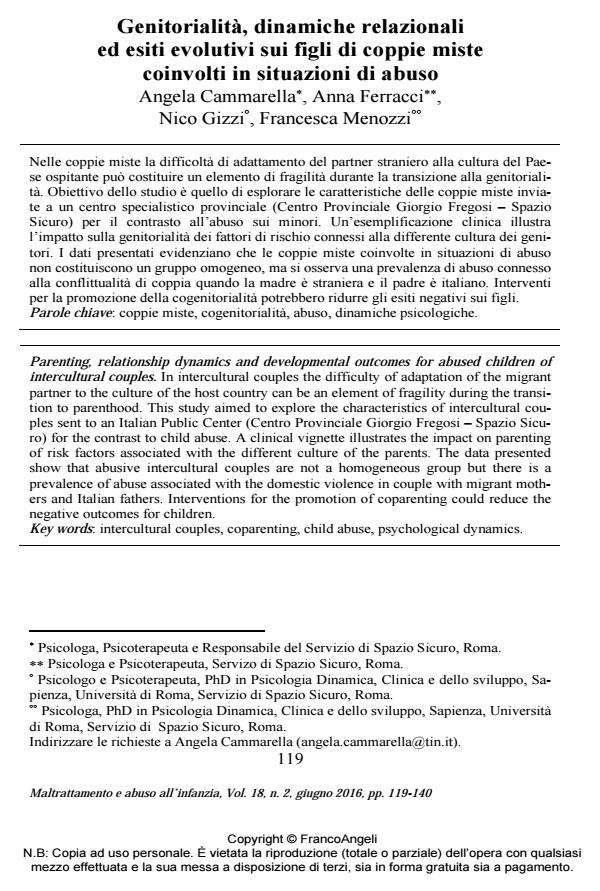Parenting, relationship dynamics and developmental outcomes for abused children of intercultural couples
Journal title MALTRATTAMENTO E ABUSO ALL’INFANZIA
Author/s Angela Cammarella, Anna Ferracci, Nico Gizzi, Francesca Menozzi
Publishing Year 2016 Issue 2016/2
Language Italian Pages 20 P. 119-138 File size 219 KB
DOI 10.3280/MAL2016-002007
DOI is like a bar code for intellectual property: to have more infomation
click here
Below, you can see the article first page
If you want to buy this article in PDF format, you can do it, following the instructions to buy download credits

FrancoAngeli is member of Publishers International Linking Association, Inc (PILA), a not-for-profit association which run the CrossRef service enabling links to and from online scholarly content.
In intercultural couples the difficulty of adaptation of the migrant partner to the culture of the host country can be an element of fragility during the transition to parenthood. This study aimed to explore the characteristics of intercultural couples sent to an Italian Public Center (Centro Provinciale Giorgio Fregosi - Spazio Sicuro) for the contrast to child abuse. A clinical vignette illustrates the impact on parenting of risk factors associated with the different culture of the parents. The data presented show that abusive intercultural couples are not a homogeneous group but there is a prevalence of abuse associated with the domestic violence in couple with migrant mothers and Italian fathers. Interventions for the promotion of coparenting could reduce the negative outcomes for children.
Keywords: Intercultural couples, coparenting, child abuse, psychological dynamics
Angela Cammarella, Anna Ferracci, Nico Gizzi, Francesca Menozzi, Genitorialità, dinamiche relazionali ed esiti evolutivi sui figli di coppie miste coinvolti in situazioni di abuso in "MALTRATTAMENTO E ABUSO ALL’INFANZIA" 2/2016, pp 119-138, DOI: 10.3280/MAL2016-002007